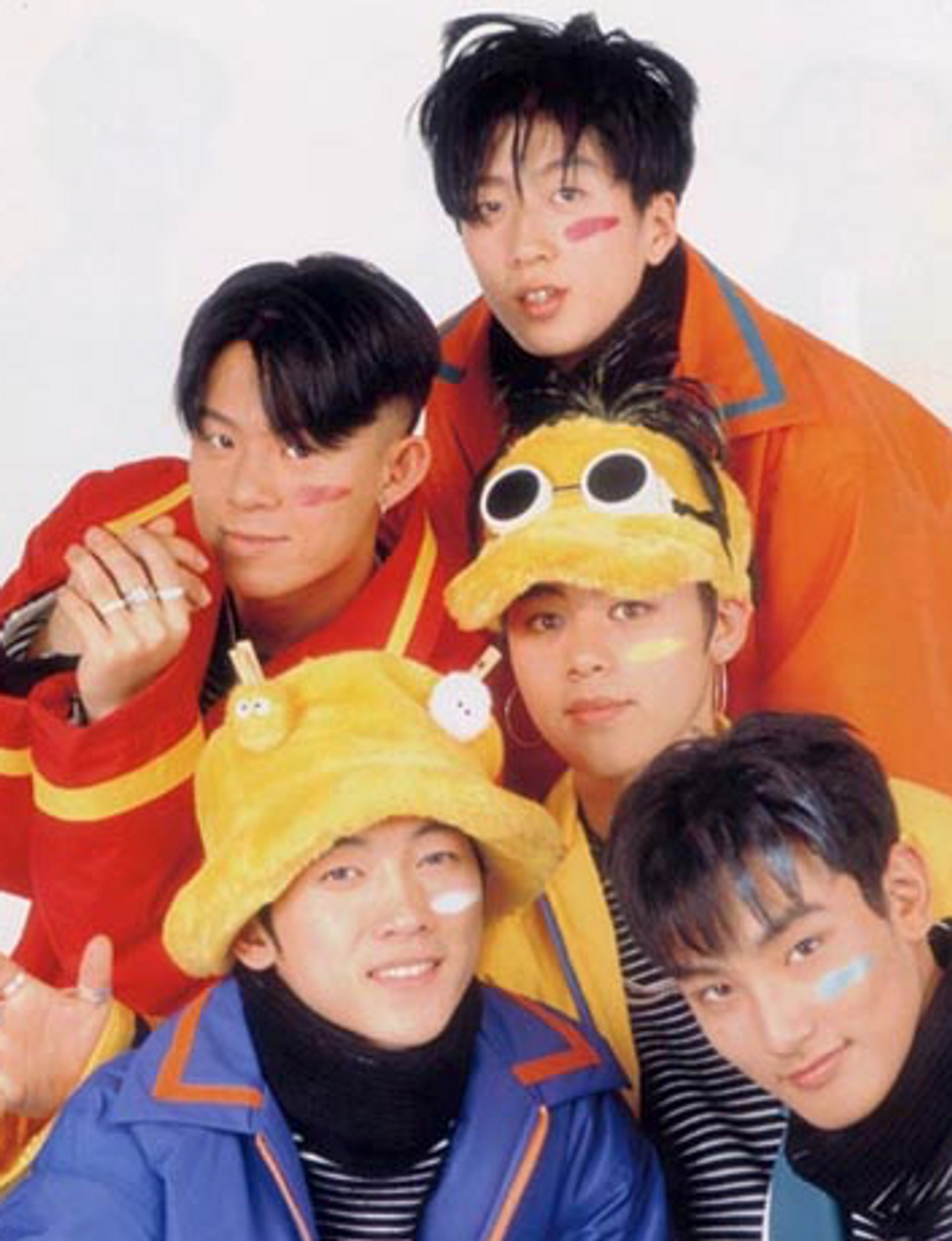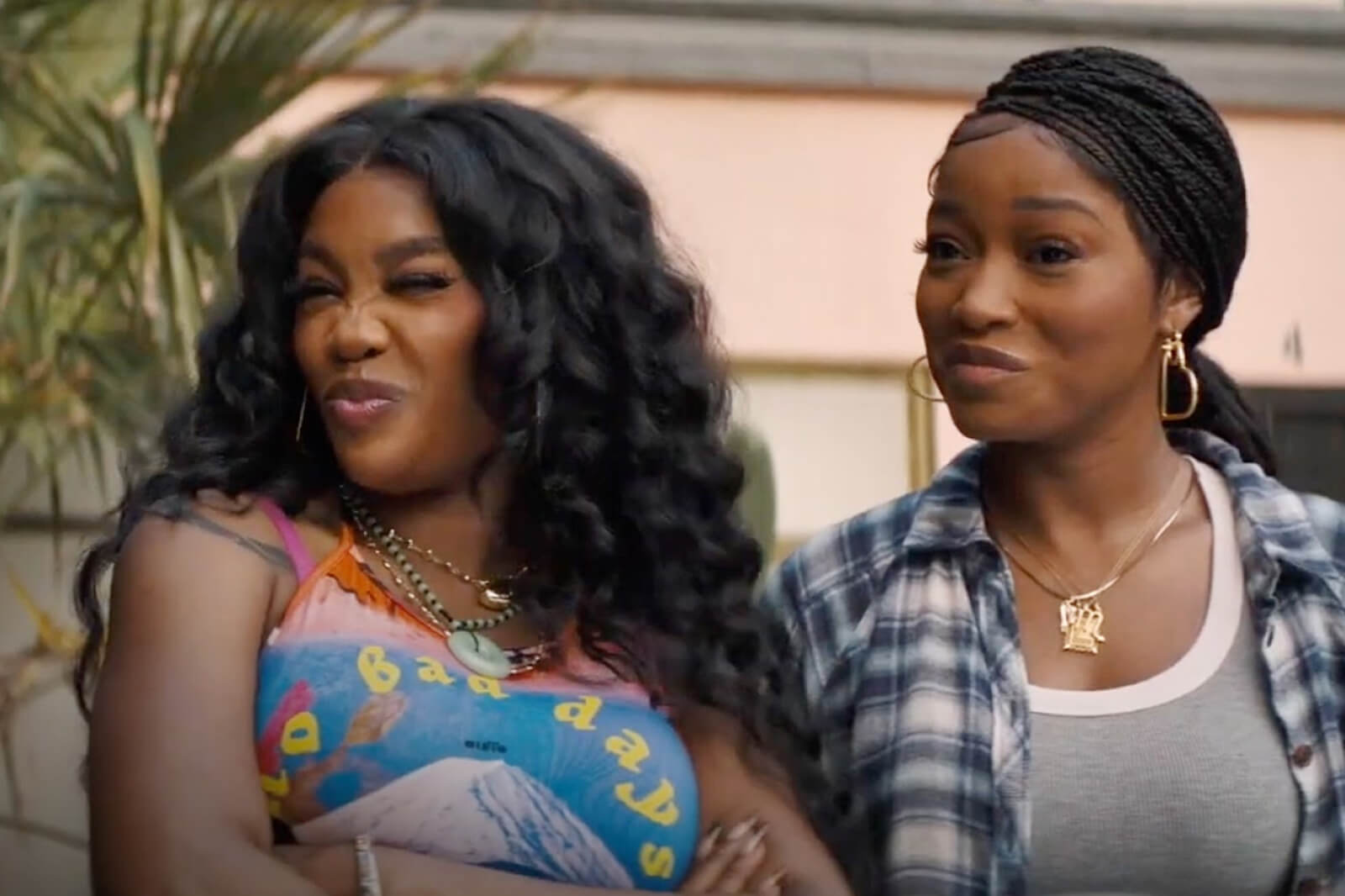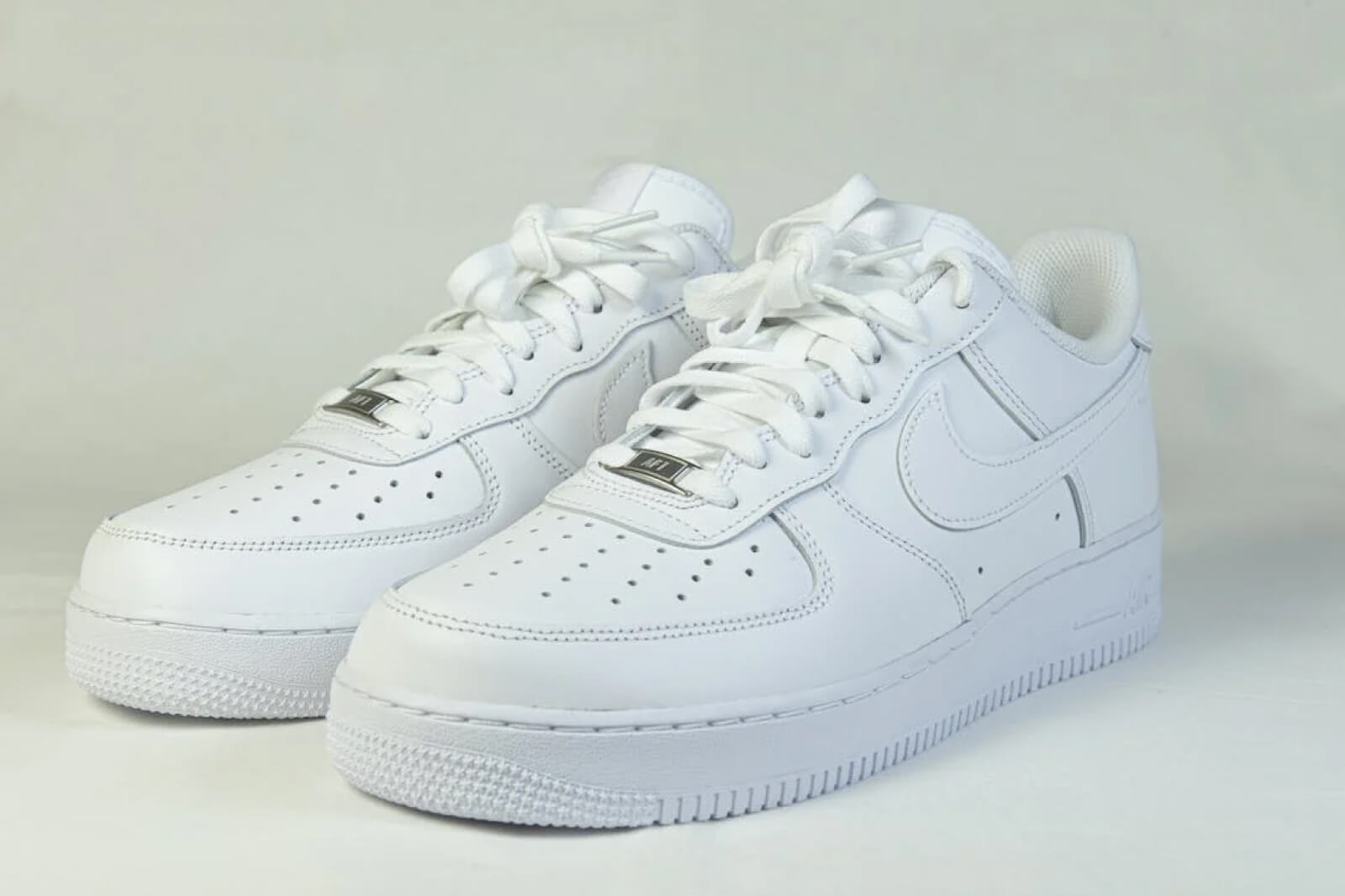
Robynne-Hu-Unsplash
Kpop was born in the late 1980s and early 1990s, a hybrid of Korean 트로트 trot, American hip hop, and Eurodance.
And as the decade continued, a certain template emerged: The tunes were catchy, the pop stars were unbelievably photogenic, and the performances were half athletic showmanship and half poetic-rage-feels that Koreans call 한 han.
In part 1 of my Kpop boy band series, I talk about how 서태지와 아이들 Seo Taiji and The Boys (which included future founder of YG Entertainment, 양현석 Yang Hyun Suk) jolted the Korean music industry’s gonads. The influence of “Seo Taiji Syndrome” cannot be overstressed, because they legit came in like the Horsemen of the Apocalypse, their mics akin to scythes that chopped the heads off the preconceived notions of what Korean youth wanted.
Taijiboys – I know, 서태지와 아이들 – 난 알아요, Saturday Night Music Show 19920815www.youtube.com
Listen to the above 서태지와 아이들 Seo Taiji and The Boys performance, and then compare it to the below video. We can clearly see how their foundational beat was influenced by New York City freestyle:
Freestyle MegaMix – Judy Torres – Cynthia & Johnny O – TKA – (DJ Paul S)www.youtube.com
Also notice how both the rap and slick performance style of LL Cool J’s “I Need Love” comes into play:
LL Cool J – I Need Lovewww.youtube.com
We can’t forget how Seotaiji also pulls in distinct 트로트 trot melodic chord and emotiveness, like those exemplified in this 1987 pop-트로트 trot song by legendary diva 이은하 Lee Eun Ha:
And of course New Jack Swing was very much the flavor of so much this era’s K-pop. Here is a great mix of ’90s Korean New Jack Swing songs:
90년대 한국 뉴잭스윙 (90s Korean New Jack Swing))www.youtube.com
So let’s not get it twisted: Even though K-pop is a melange of sounds and cultures, it is undoubtedly based in American Hip-Hop culture, brought to South Korea by Black and Hispanic American soldiers stationed in the Seoul district of 이태원 Itaewon.
Itaewon Freedom
Today, 이태원 Itaewon has hip cafes, stores, and a variety of nightclubs for young Koreans to party all night. It’s considered a “cool” alternative to clubbing in Gangnam or Hongdae, as JYP (founder of the record label of super-girl-group TWICE) and friends cheekily sing about in “Itaewon Freedom.”
“ITAEWON FREEDOM(이태원 프리덤) (with J.Y. Park(박진영))” M/Vwww.youtube.com
But 이태원 Itaewon was not always a stomping ground for the hip and fashionable. Back in 2002, I remember going to Itaewon during the afternoon and seeing middle-aged women in sequined dresses (probably going to an old-fashioned lounge/sex work place).
From the 1950s, Itaewon catered to the whims and tastes of the American G.I. There was a vibrant nightlife, complete with cover bands, sex workers, smokey bars with cheap whiskey shots, and lounges playing the latest Billboard hits.
As decades roll on, and the demographic of the military started to include more and more brown and Black enlisted men, the music of the clubs also started to change. By the 1980s, Itaewon was the center of Korea’s Hip-Hop culture.
So, when democracy finally came to South Korea in the late 1980s (which is when the first generation of K-pop boy bands came in), the zeitgeist was about trying new things…riskier things…more creative things. And the epicenter was an Itaewon club called 별 나이트 클럽 Moon Nightclub.
There was something called the “DJ Club Chart” and it was categorized by region. Oftentimes, the songs on this char… https://t.co/6DOpXG7qbM— bora 💜 (slow) (@bora 💜 (slow)) 1611500187
Previous Korean acts had imitated Hip-Hop before, often looking like high school talent show rejects. But 서태지 Seo Taiji was unlike any Korean group before because they were so deep into the club scene in 이태원 Itaewon.
So many of the early 1990s boy bands I mentioned in Part 1 came from Moon Nightclub and the Hip-Hop scene in 이태원 Itaewon.
You Wanna Be a K-pop Star? Get on TV and Perform Like It’s Your Last Night on Earth
With the explosion of “Seo Taiji Syndrome,” scrappy young record labels (often led by young Korean dudes who loved American music) did the equivalent of throwing spaghetti against the wall to see what would stick. They promoted solo artists, dance groups, Hip-Hop groups, mixed-gender groups, you name it.
In the following 50-min compilation of Korean hits from 1993 (a year after Seo Taiji debuted), I’m partial to a mixed-gender duo at 9:57, 철이와 미애 Charlie and Mia. By the way, many of these ‘90s mixed-gender groups had amazing girl members, who were chosen more for dancing ability rather than feminine standards at the time.
1993년 가요톱10 1위곡 모음Zip (90’s K-pop Classic) | KBS 방송www.youtube.com
Every week, artists hoped to be invited on a variety of music TV shows, where they vied for the title of “#1 Act” for that week. Ostensibly, the title was based on record sales, but different shows would sometimes crown different winners during the same week — so who knew what would happen? The point is: Half-assing a performance was not an option.
To be banned from the TV music shows was career suicide, so bands had to follow strict rules: no visible tattoos, no dyeing the hair crazy colors, no slang-filled lyrics, nothing that would be a “bad influence” to the Korean youth. Sure, the military dictatorship was over, and so were Draconian censorship laws, but South Korea wasn’t ready for boys with pierced ears. That would be too…Western.
Former (and recently rediscovered in 2019 when he was 50-years-old) K-pop star 양준일 Yang Joon Il, AKA the ‘90s G-Dragon, recently talked about how MBC, one of the biggest TV stations, made him come for an image “evaluation” and told him to cut his shoulder-length hair.
When you don’t like your hair done in the salon [Happy Together/2020.03.26]www.youtube.com
To the conservative older generation, K-pop must have seemed monstrous. But for the youth of 1990s Korea, who had been forced since elementary school to go to after-school prep academies called 학원 hagwons and do homework until the witching hour, K-pop heralded a dizzying change in South Korean society.
Kpop Starts Selling Millions of Records by the Mid-1990s
Within three years of 서태지와 아이들 Seo Taiji and Kids’ debut, the K-pop industry was flush with investor money from the booming economy and its exponentially growing fan base. Each of 서태지와 아이들 Seo Taiji and Kids’ first three albums sold over 1.6 million copies, while DJ DOC would sell 3 million records before the end of the decade. Considering Korea has about 50 million people (versus Japan’s 126 million and America’s 328 million), selling a million of anything domestically is a big deal.
By the mid-1990s, the industry was ripe to go through the second “syndrome”: the teen boy group template that we all know and love today.
But before we go there, we have to start with the legendary 클론 CLON and 터보 Turbo, who serve as the bridge between the early 1990s boy groups and these later teen idol groups.
클론 CLON
Remember Moon Nightclub, which was the hottest Hip-Hop club in early 1990s 이태원 Itaewon? Many first-generation K-pop boy bands were plucked from this nest, and we have SM Entertainment’s founder, 이수만 Lee Soo Man, to thank for that.
You can hate 이수만 Lee Soo Man and SM for their Draconian slave contracts with their artists like EXO and NCT, but he also was the one of the biggest tastemakers behind turning the Korean music market more Western. And one of the things he would do was have SM scouts go to clubs like Moon, and find the most talented young dancers.
Two of the dancers discovered by SM Scouts were 구준엽 Koo Jun-yup and 강원래 Kang Won Rae, who would later create the legendary duo 클론 CLON. The below video doesn’t have subtitles; but, basically, 구준엽 Koo Jun-yup is talking about Moon, explaining how competitive the dancers were and discussing how he and 강원래 Kang Won Rae stood out from the others because they were so fly.
구준엽(Koo Jun-yup)x강원래, SM 1호 가수 ‘현진영과 와와’ 탄생 비화 아는 형님(Knowing bros) 136회www.youtube.com
Fun fact: Just like the two members of legendary group DEUX, whom I talked about extensively in Part 1, both members of 클론 CLON were in WAWA, the backup dancing troupe for SM Entertainment’s first artist, a Hip-Hop soloist named 현진영 Hyun Jin Young.
Let’s go back to 1990 and see the baby-faced and luxuriously coiffed 클론 CLON members, complete with epic fanny packs, do their back dancer thing. And keep your eyes peeled for the acrobatics starting at 2:19, which include grabbing the solo dude’s ankles and flipping him upright like they’re doing a TikTok meme.
현진영과 와와 – ‘야한여자’ (1990) | Hyun Jin-young and WAWA – ‘Sexy Woman’ 【KBS 쇼 토요특급】www.youtube.com
Fast-forward six years to 1996, when they formed the duo 클론 CLON (with another record label, not SM Entertainment). They were older than the other K-pop bands when they released their debut LP “Are You Ready,” which ended up selling over a million copies.
클론 CLON’s song “쿵따리 샤바라 Kung Ddari Sha Bah Rah” (which doesn’t specifically really mean anything, it’s kind of like “boom hey yo hey yo”) is a super fun sing-a-long. Also, don’t miss them shaking dat ass at 1:50.
Clon – Kung Ddari Sha Bah Rah, 클론 – 쿵따리 샤바라, MBC Top Music 19960713www.youtube.com
Another hit single from their million-selling album was “난 Me”:
Clon – Nan, 클론 – 난, MBC Top Music 19960907www.youtube.com
I have vivid memories of hearing their 1997 “월드컵 송 World Cup Song” during the 2002 World Cup, which was held jointly by Japan and Korea. This song is an institution: Every Red Devil (fans of the Korean national team) would know this song. Even I know this song, and I know sh*t about sports.
Slight tangent: A young woman named Mina Shim became the first in a long line of unofficial “Miss World Cup Girl” (young women who go viral for dressing scantily at the World Cup). And of course she put out a one-hit wonder in 2003.

In 2000, 강원래 Kang Won Rae (the guy with the hair) was in a motorcycle accident that left him paralyzed from the waist down. South Korea can be notoriously judgmental towards those with physical limitations, and K-pop is rigorously dance-oriented, so back in 2002, Kang didn’t go on stage to perform “The World Cup Song.”
However, in 2018 he was back with this rousing performance:
열린음악회 – 클론 , 에이스, 그레이시, 인천 유나이티드 – 월드컵 송 .20180617www.youtube.com
And in 2019, 클론 CLON and mixed-gender Kpop group KARD did a joint rendition of 클론 CLON’s biggest hits:
Clon with KARD, Nan&First love&Kung Ddari Sha Bah Rah [Dream Concert 2019]www.youtube.com
터보 Turbo
Although banned from performing on TV in 1998 (the ban was eventually lifted), the duo 터보 Turbo remains famous and in their day were considered “dance kings.”
The standout star of the duo is singer 김종국 Kim Jong Kook, a fitness buff who had the physique and rugged cheekbones of an MMA fighter, but then opened his mouth to an almost delicate soprano voice. 터보 Turbo went through two different rappers, but to be honest, I barely noticed. Note the stylized tones of the rappers, which range from nasal to a super super gravelly DMX-esque tone. This sort of rap style was very popular in Kpop pop throughout most of the 1990s.
터보 Turbo has had multiple hits, and were popular in Taiwan as well. Their 1996 bop “러브 이즈 Love is” is instantly recognizable by the sample of Nirvana’s “Smells Like Teen Spirit” in the beginning.
터보 (Turbo) – Love is 러브 이즈 (1996年)www.youtube.com
Another favorite, also from 1996, called “트위스트 킹 Twist King” is hella fun to dance to a la Mia Wallace in “Pulp Fiction.”
Turbo – Twist King, 터보 – 트위스트 킹, MBC Top Music 19960831www.youtube.com
Another necessary song to know is 1997’s “Goodbye Yesterday.” The whole “na na na na” part in the beginning and then 김종국 Kim Jong Kook’s soaring: “그랬나봐…너를 사랑했나봐” (“I guess it was true…I guess I did love you”) is peak 터보 Turbo.
Turbo – Goodbye yesterday, 터보 – Goodbye yesterday, MBC Top Music 19971213www.youtube.com
Perhaps their oddest hit is 1995’s “검은 고양이 네로 Black Cat Nero,” a cover of a Japanese children’s song (that is itself a cover of an Italian children’s song). Though I’ve never put it on during karaoke, if I ever did, once the chorus comes on the viral meow dance at 1:04 would inevitably come out.
【TVPP】Turbo – Black Cat Nero , 터보 – 검은 고양이 네로 @Star Hunchwww.youtube.com
Just a few months ago, rookie K-pop idol boy band ATEEZ covered Turbo’s cover and LEFT NO SURVIVORS, fam. Even the meow dance at 3:04 is next-level.
ATEEZ – 검은 고양이 [불후의 명곡2 전설을 노래하다/Immortal Songs 2] 20200829www.youtube.com
김종국 Kim Jong Kook has remained relevant (and super fit) as a celebrity. He’s probably best known recently for being a regular on super-popular Korean variety show “Running Man.”
Now it’s about to happen. The advent of the idol trainee system, the infamous system that would harness all the disparate aspects of K-pop together in a way that that would encourage young fans to believe that their super gorgeous, perfectly choreographed gang of 오빠 oppas were coming to save ’em from their stressful, humdrum life.
The Age of the Idol Trainee Groups Begins: H.O.T.
With an increasingly crowded marketplace and growing competition from other record labels, 이수만 Lee Soo Man did something every savvy marketer is trained to do: He asked a bunch of high schoolers, “What sort of K-pop group would you like to see?”
From that target audience survey was born H.O.T. (High Five of Teenagers), the legendary 1st Generation idol group (K-pop is divided into generations based on decades, so groups formed in the 1990s are 1st Gen, then those formed in the 00’s are 2nd Gen, etc).
Were H.O.T. technically the first ever idol group in Korea? No — according to members of H.O.T. themselves, that honor goes to a group literally called IDOL (I can’t find any performance footage of this group, however).

The training system for artists, helmed by the record label, was not necessarily a new thing in K-pop, but to do it at such a mass scale was new. And at their peak, the members of H.O.T. were some of the most popular celebrities in Korea. Schools had to prohibit girl students from leaving early to go to a H.O.T. concert or to buy their latest album.
Consisting of leader 문희준 Moon Hee Jun, lead singer 강타 Kangta, singer Tony Ahn, dancer 장우혁 Jang Woo Hyuk, and maknae (youngest member) 이재원 Lee Jae Won, the group was SM Entertainment’s perfect storm. Almost every single H.O.T. album has sold over a million copies, totaling over 6 million sales in their career. Their popularity spread like wildfire in China and Japan as well, which SM Entertainment would later capitalize on by creating future idol groups with members from (particularly) China.H.O.T.’s 1996 debut single “전사의 후예 Warrior’s Descent” is like if you take Seo Taiji, but make them five teenage boys who looked like they could be anime characters.
H.O.T – Warrior’s Descendant, HOT – 전사의 후예, MBC Top Music 19961012www.youtube.com
But it was undoubtedly H.O.T.’s second single, “Candy” that shot them into the stratosphere. It created the template of every boy band needing a “hard” side, but also a “cutsie” side.
K-pop insider info: at 00:18 and 00:51, when 희준 Heejun is doing dance puns. Hard to explain succinctly, but it’s really adorable.
H.O.T – Candy, HOT – 캔디, MBC Top Music 19961207www.youtube.com
My favorite H.O.T. song is “We Are the Future” which samples Kraftwerk, and our boy 희준 Heejun has another viral dance moment, where he does the whole locking-with-his-head thing at 2:17. If you ever see a Korean variety show where he’s a guest (by the way, he’s incredibly funny), one of the ways he pokes fun of himself is by doing this dance.
H.O.T – We are the future, MBC Top Music 19971115www.youtube.com
I absolutely love this time capsule of concert footage, featuring H.O.T. and previously-discussed CLON. The audience has a lot of middle-aged people, so screaming hordes.
Remember that back then in Korean culture, being rambunctious in front of elders was frowned upon as rude and ill-mannered. And you can just see H.O.T. being all, “Wtf, I can’t even.” I recommend watching the whole thing because it so clearly shows the generational divide that was happening in Korea at the time:
This concert footage from 1999 is H.O.T. at their best in my opinion, where you can clearly see the start of future groups like BTS: Every member is easy on the eyes (with especially Kangta being singled out as the outstanding visual), talented, and flawlessly prepared.
Warrior’s Descendant & Wolf and Sheep – H.O.T. 918 Concert (Sept/18/1999)youtu.be
Their polished choreography and precocious swagger created a macho-but-still-accessible vibe that would be the signature of the all boy bands in the Hallyu Wave (a Chinese term that describes the viral spread of Korean pop culture across Asia).
The K-pop boy band mystique had begun: A boy pretty enough to be a girl, but with a masculine vibe and, most importantly, sex appeal simmering under their athleticism…not so blatant that young girls had to be protected (oversized pastel clothes are so uwu), but more than enough to drive these hormonal teens into hysteria.
In 2018, due to overwhelming demand, they reunited for a comeback concert:
H.O.T. is BACK!! H.O.T – Warrior’s Descendant [Infinite Challenge Ep 558]www.youtube.com
Here is an almost 1 hour 30 min compilation of H.O.T. performances, including many songs I haven’t mentioned (because to be honest, I find most H.O.T. songs pretty bland, sorry not sorry).
[세기말 레전드] 1세대 아이돌 ★에쵸티★ 다시보기 | H.O.T. Stage Compilationwww.youtube.com
Rivals to the Boy Band Throne: 젝스키스 Sechs Kies
Here’s the thing, though: while I liked H.O.T., I was never a “White Angel” (the name fans give themselves because white is their official fan color).
Instead, I was straight-up “Yellkies” (yes, as in yellow is the official fan color). I was a huge fan of H.O.T.’s greatest rival, 젝스키스 Sechs Kies.
젝스키스 Sechs Kies (pronounced Jex Kiss, or you call them by their nickname 젝키 “Jekki”) is German, and it means “six crystals.” Already, that was different, because every K-pop band up that point had English names.
I remember noticing how huge the group was because there were six members. Obviously, this was way before SM Entertainment came out with EXO and NCT with their Broadway ensemble sizes, but 젝스키스 Sechs Kies also had subunits, much like large K-pop future groups.
The “Black” Kies were the rappers and main dancers, with leader 은지원 Eun Ji Won, and the two break dancers/rappers 이재진 Lee Jae Jin and 김재덕 Kim Jae Duc, who were both underground dancers, from cities south of Seoul. (when 서태지와 아이들 Seo Taiji and The Boys came out, they didn’t just change the music — they also changed culture, and breakdancing became the hottest thing in Korea. In fact, Korea b-boys are renowned as some of the best in the world).
Another fun fact: 김재덕 Kim Jae Duc has a strong 사투리 satoori (regional accent), and the popularity of 젝스키스 Sechs Kies helped rehabilitate the image of 사투리 satoori from something to look down on to something cute and attractive.
The “White” Kies were the younger ones, and the singing line featured main vocalist 강성훈 Kang Seung Hoon, 고지용 Ko Ji Yong (my personal bias…the tall one), and 장수원 Jang Su Won.
Formed by DSP Record specifically as the “H.O.T. killer,” they debuted when H.O.T was taking a break from their promotions.
Rivalry between H.O.T vs Sechskies [Happy Together/2020.02.13]www.youtube.com
젝스키스 Sechs Kies’ debut single in 1997, “학원별곡 School Anthem” is similar to H.O.T.’s debut, “Warrior’s Descent” in its “being young sucks” message, but the infamous “back down” move at 2:15, which looks like breakdancing on X-Games mode, convinced me that Sechs Kies were way more my style.
젝스키스 – 학원별곡(97년 4월 4주)www.youtube.com
Did they also have cutsie songs, like H.O.T.’s “Candy”? Of course. But unlike H.O.T., who matched well with these more cute songs, 젝스키스 Sechs Kies never seemed comfortable doing those tunes because they were never cuddly characters, especially with each other.
My favorite song is “폼생폼사 I’m No Simp” (my modern translation of the title) which had a music video that was borderline scandalous in 1997 South Korea… Teen boys just walking around without shirts? In public?
A famous solo artist and heartthrob in the mid-1990s named 구본승 Gu Bon Seong had his pop career derailed by what some compare to the Janet Jackson nip-slip…except 구본승 Gu Bon Seong had taken off (ripped off?) his own shirt during a concert. So, this 젝스키스 Sechs Kies video would have been an eyeful.
젝스키스 Sechs Kies has more Korean 트로트 trot influence in their melodic structure than H.O.T. I’m a die-hard fan of 트로트 trot, and “폼생폼사 I’m No Simp” is more or less old-school trot with a techno beat and rap verses. Highly recommended.
Along with their DSP labelmates, the legendary girl group Fin.KL, they also were the first K-pop group to perform in North Korea and debuted with their single “예감 Hunch”. (Supposedly, the North Koreans thought lead singer 강성훈 Kang Seung Hoon was a girl because of his Karen haircut).
Sechskies – Yaegam performance in North Koreawww.youtube.com
I also love 1997’s “로드파이터 Road Fighter,” which has this beautiful melody sung by main vocalist 강성훈 Kang Seung Hoon, who we’ll soon see is an MVP when it comes to hair. In this performance, he has the silkiest hair I’ve ever seen.
Also can we agree that leader 은지원 Eun Ji Won (the one in center front doing the gruff rapping) has the most intimidating eyebrows ever?
젝스키스 (Sechs Kies) 로드파이터 Road Fighter Live 980725 음캠 고화질 (high definition)www.youtube.com
Perhaps the most enduring 젝스키스 Sechs Kies song is “커플 Couple” which is still used whenever a wholesome, romantic mood is needed.
1998 12 19 음악캠프 젝스키스 커플 노랭이들 의상www.youtube.com
Just this past Chinese New Year, almost 30 years after the song initially came out, here are some of the members of 젝스키스 Sechs Kies performing “커플 Couple” in partial 함복 hambok Korean traditional clothes. They look like ageless vampires:
젝스키스 – 커플 [유희열의 스케치북/You Heeyeol’s Sketchbook] | KBS 210212 방송www.youtube.com
젝스키스 Sechs Kies’ first number one hit came a bit late, thanks to H.O.T.’s dominance. This is 1998’s “기사도 Chivalry.”
Sechs Kies – Chivalry, 젝스키스 – 기사도, MBC Top Music 19980110www.youtube.com
To be honest, I am a HUGE fan of this phase of the group, because I feel as though they’ve just stopped giving a damn. They’re exhausted by the constant demands by the record label to be the “H.O.T. Killer,” by the censorship by the TV music shows, the growing legion of stalker 사생팬 sasaeng fans.
Yes – “Intimidating Eyebrow” 은지원 Eun Ji Won did start off the performance by saying “the f**king d*ck gets in your p*ssy.” He went to school in Hawaii so he knew all the slang, while the Korean censors had no idea what any of it meant. What makes this extra hilarious? The Korean lyrics of this song is about the pure, self-sacrificing love that this knight-in-shining-armor has for a girl.
And yes, main vocalist 강성훈 Kang Seung Hoon’s hair is looking especially praying mantis-esque. By the way, in other performances of the song, he ends the routine (when everyone is yelling “Here we come, it’s Jekki!”) by doing some air humpin’, no biggie.
DSP suddenly disbanded the group in 2000, despite their protestations (젝스키스 Sechs Kies wanted to stay together). Back then, in the early 2000s, boy band members didn’t become actors or go on variety shows as solo artists as they would these days; it was considered unseemly to do so. So, they (as well as other first-gen groups) often faded into obscurity, or often went to China to do solo work.
So it was quite a pleasant surprise to see Suwon and Jae Duk form the duo 제이워크 JWalk and produce one of my fave K-pop ballads of 2002, “Suddenly.”
제이워크(J-WALK)- Suddenly [MV]www.youtube.com
Many years later, 젝스키스 Sechs Kies signed with YG (home of Big Bang and BLACKPINK) and in 2016, they did a really impressive comeback. Here they are, redoing “기사도 Chivalry.”
(By the way, some quick tea: as of Jan. 2019, main vocalist 강성훈 Kang Seung Hoon left the group over allegations of defrauding his fan club).
SECHSKIES – ‘기사도(CHIVALRY)’ + ‘연정(HEARTBREAK)’ 1204 SBS Inkigayowww.youtube.com
Also, here is a concert they did, also in 2016, with their “missing” member, Ko Ji Yong, who became a successful businessman and didn’t rejoin the group. But, he did show up for their final song:
[Infinite Challenge] 무한도전 – Sechs Kies Final stage. 20160430www.youtube.com
And last year, they came out with a new single, “All for You”:
[쇼! 음악중심] 젝스키스 – ALL FOR YOU ( SECHSKIES – ALL FOR YOU )www.youtube.com
Here is an hour-long compilation of their performances. I recommend going straight to 7:15 for “연정(Heartbreak),” which has one of my favorite trot-inspired melodies in Kpop (why do they look so high, though?), as well as “Com’back,” which starts at 43:18, mainly for the techwear outfits:
[세기말 레전드] 1세대 아이돌 ★젝스키스★ 다시보기 | Sechs Kies Stage Compilationwww.youtube.com
Rivalry Between H.O.T. “White Angels” and 젝스키스 Sechs Kies “Yellkies”
Ah. This is the stuff of legends. But spoiler alert: All the first generation boy bands are on friendly terms now.
People today often remark how toxic Kpop stans are, especially in how fandoms tear down other fandoms. However, this toxicity happened way before even the explosion of the Hallyu Wave. The fan clubs of H.O.T. and 젝스키스 Sechs Kies were often at extreme war with each other (as fictionalized in the popular TV series “Reply 1997”).
SUB ESPAÑOL Sechskies Fans VS HOT Fanswww.youtube.com
Because 젝스키스 Sechs Kies was literally created as the “H.O.T. Killer,” the rivalry even spilled backstage at shows. H.O.T. leader 문희준 Moon Hee Jun came with his friendly golden-retriever energy to 젝스키스 Sechs Kies leader, Mr. Eyebrows. But as recounted in this clip, 은지원 Eun Ji Won was dry AF.
[ENG] The founder of idolwww.youtube.com
Now, the bond of being first-gen boy bands has melted any frigidity between the bands. 젝스키스 Sechs Kies’ dancer 김재덕 Kim Jae Duc and H.O.T.’s Tony Ahn are now BFFs and have been long-time roommates/soulmates/models of bromance.
Tony and Jae-duck, seems like a couple whatever they do [Happy Together/2016.07.07]youtu.be
Back in 2013, there was even a series called “20세기 미소년 Handsome Boys of the 20th Century” where many of these first-gen boy bands got together and chilled. I couldn’t find a video with English subs, but if you have someone who knows Korean, watch it together. It’s hilarious:
[130416] 20세기 미소년 E01www.youtube.com
Also, it turns out that Heechul from SM Entertainment’s Super Junior (젝스키스 Sechs Kies’s rival record label) is a HUGE 젝스키스 Sechs Kies fanboy. Here they are talking sh*t about each other (as usual) with Heechul in tow. Make sure you turn on the CC.
(ENG/SPA/IND) Boy Band Sechskies’ Interesting Behind Story | Life Barwww.youtube.com
As Kpop has moved to fourth and fifth generation boy bands, younger bands have started doing mash-ups to honor both of these supergroups. Back in 2013, BTS (who were just on the ascent) did a mash-up performance of H.O.T. debut ‘Warrior’s Descent” and 젝스키스 Sechs Kies’ debut “학원별곡 School Anthem,” with their own song, “No More Dream,” which is perfect.
All these songs deal with the broken education system and the stress and pressures that drive Korean people to some of the highest suicide rates in the developed world.
【TVPP】BTS – Special stage + No More Dream, 방탄소년단 – 학원별곡 + 전사의 후예 + 노 모어 드림 @ 2013 KMFwww.youtube.com
And then…an economic crisis leads to new plans
Right when the K-pop boy band party was getting started, Asia went into a massive recession, the infamous IMF crisis of the 1990s. Which was the worst thing that could have happened to the individual players at the time…but it was also one of those events that, in retrospect, may have been the secret sauce to why Kpop is going through a golden age now. In Part 3, we will go more into the most popular boy bands during this precarious time, from NRG, Tae Sa Ja, g.o.d., Shinhwa, and the new wave of Korean-Americans coming in with their West Coast Hip-Hop influences.














